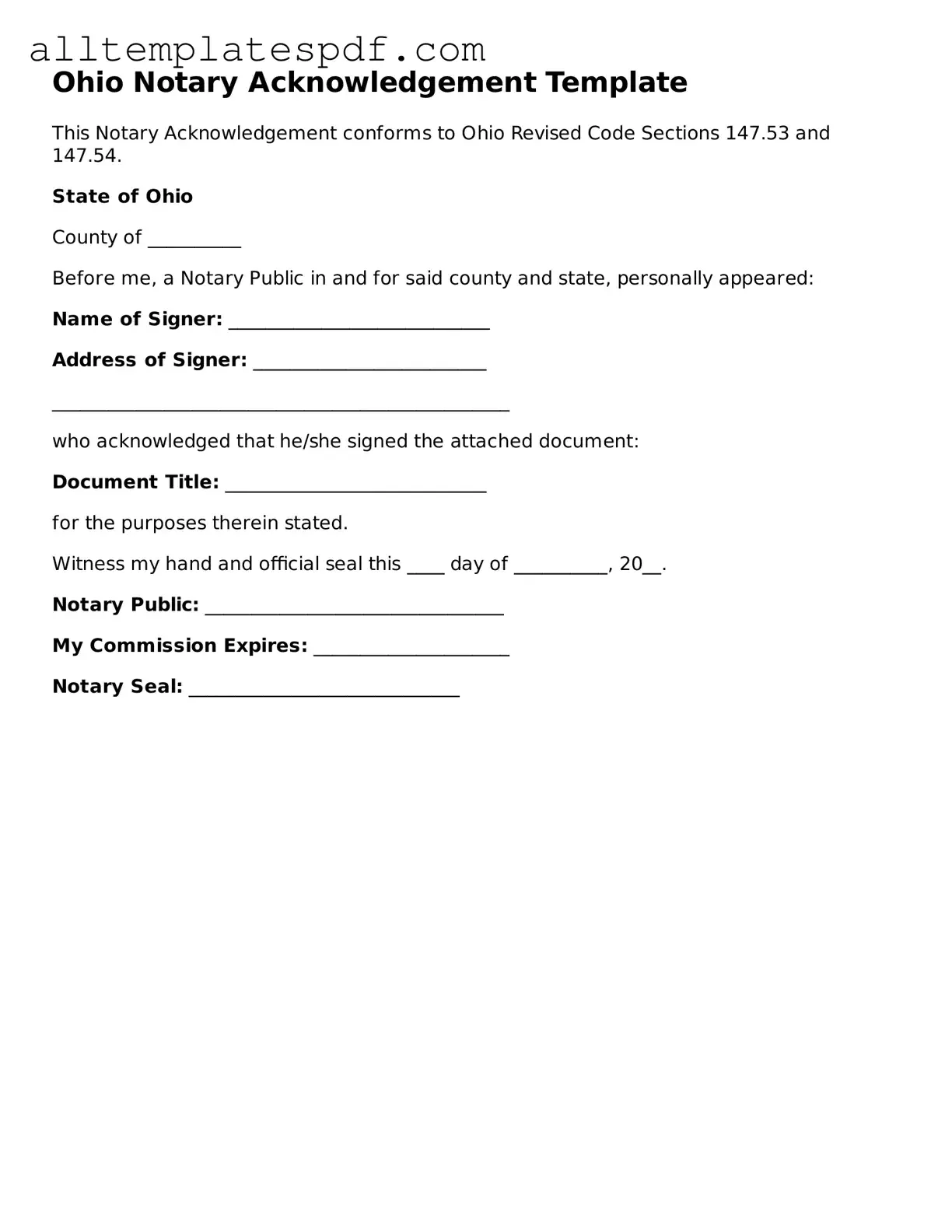Filling out the Ohio Notary Acknowledgement form requires attention to detail. One common mistake is failing to include the correct date. The date of the acknowledgment is crucial, as it indicates when the notary performed their duties. Omitting this information can lead to confusion about the validity of the document.
Another frequent error is neglecting to provide the signer’s name. The form should clearly state the name of the individual whose signature is being acknowledged. Without this, the notary cannot confirm the identity of the signer, which is a fundamental aspect of the notary’s role.
People often forget to check the signature. The signature on the document must match the name provided in the acknowledgment. If there is a discrepancy, the notary may refuse to complete the acknowledgment, which can delay important transactions.
In some cases, individuals fail to include the notary's official seal. The seal is a vital component of the acknowledgment, as it verifies the notary's authority and the authenticity of the document. Without it, the acknowledgment may not be considered valid.
Another mistake is leaving out the notary’s signature. The notary must sign the acknowledgment to affirm that they have witnessed the signing of the document. Without this signature, the acknowledgment lacks the necessary verification.
People also sometimes use the wrong form. It’s essential to ensure that the correct Ohio Notary Acknowledgment form is being used for the specific type of document. Using an outdated or incorrect form can result in legal complications.
Additionally, individuals may forget to provide the appropriate identification for the signer. The notary must verify the identity of the signer, and without proper identification, the acknowledgment cannot proceed. This step is crucial for preventing fraud.
Another oversight is not reviewing the completed form for accuracy. Before submitting the form, it is wise to double-check all entries. Errors can lead to delays and complications in the notarization process.
Finally, people often overlook the importance of following state-specific guidelines. Each state has its own requirements for notary acknowledgments. Familiarizing oneself with Ohio’s specific rules can prevent many common mistakes.
